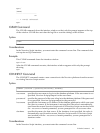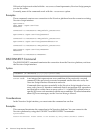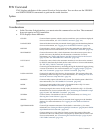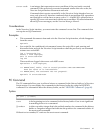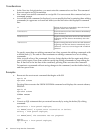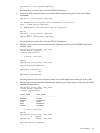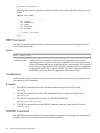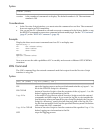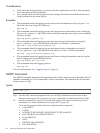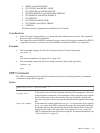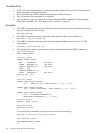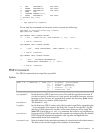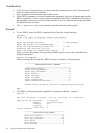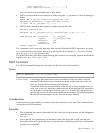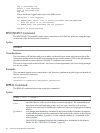
Syntax
HISTORY [number]
number
is the number of commands to display. The default number is 10. The maximum
number is 100.
Considerations
• In the Neoview Script interface, you must enter the command on one line. The command
does not require an SQL terminator.
• You can use the FC command to edit and reexecute a command in the history buffer, or use
the REPEAT command to reexecute a command without modifying it. See the “FC Command”
(page 87) or the “REPEAT Command” (page 98).
Example
Display the three most recent commands and use FC to redisplay one:
SQL>history 3
14> set schema sales;
15> show tables
16> show views
SQL>fc 14
SQL>set schema sales
....
Now you can use the edit capabilities of FC to modify and execute a different SET SCHEMA
statement.
LOG Command
The LOG command logs the entered commands and their output from the Neoview Script
interface to a log file.
Syntax
LOG { ON [CLEAR] | log-file [CLEAR] | OFF }
ON
starts the logging process and records information in the sqlspool.lst
file in the Neoview Script bin directory.
ON CLEAR
instructs Neoview Script to clear the contents of the sqlspool.lst file
before logging new information to the file.
log-file
is the name of a log file into which Neoview Script records the entered
commands and their output. If you want the log file to exist outside the
local directory where you launch Neoview Script (by default, the Neoview
Script bin directory), specify the full directory path of the log file. The
log file does not need to exist, but the specified directory must exist before
you execute the LOG command.
log-file CLEAR instructs Neoview Script to clear the contents of the specified log-file
before logging new information to the file.
OFF stops the logging process.
LOG Command 91



